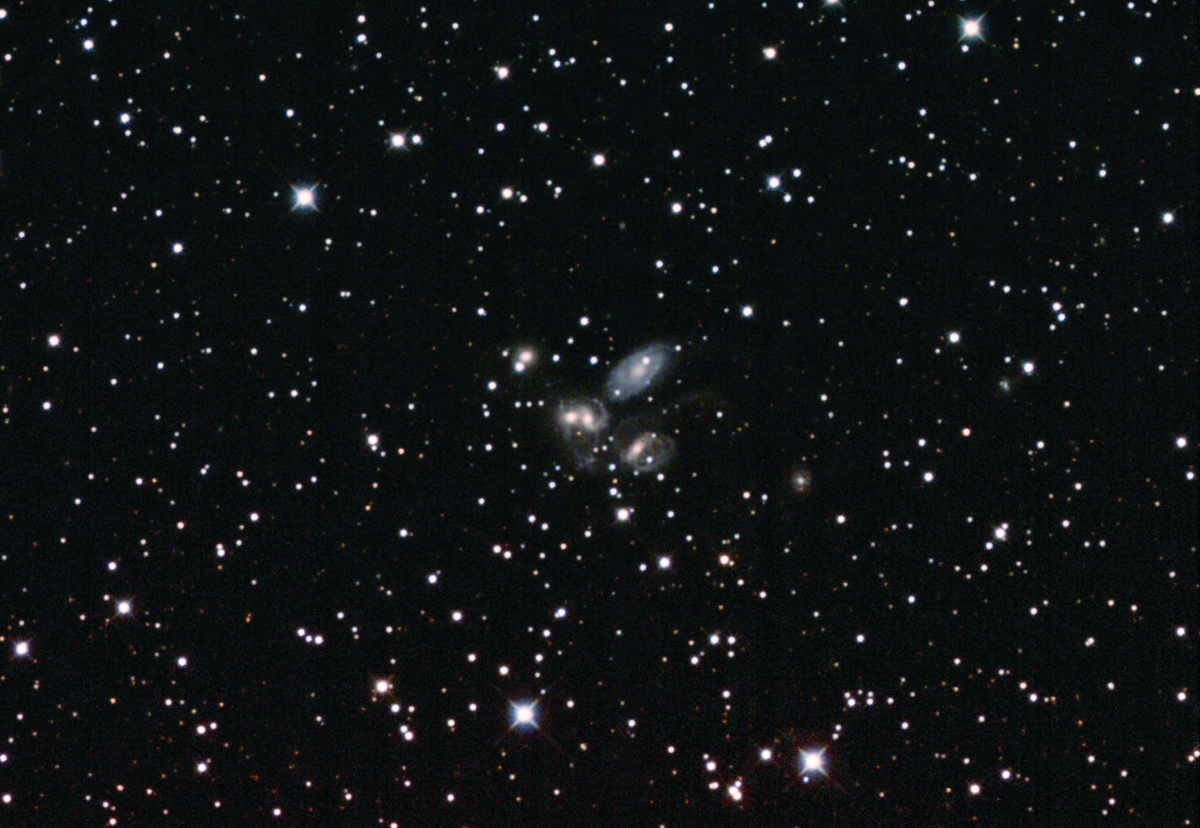 |
Galaxy Cluster in the Constellation Pegasus
 |
Stephan's Quintet in the constellation Pegasus is a visual grouping of five galaxies of which four form the first compact galaxy group ever discovered. The group was discovered by Édouard Stephan in 1877 at Marseilles Observatory and lies at a distance from Earth of 280 million light years. The group is the most studied of all the compact galaxy groups. The brightest member of the visual grouping is NGC 7320 that is shown to have extensive H II regions where active star formation is occurring. These galaxies are of interest because of their violent collisions. Four of the five galaxies in Stephan's Quintet form a physical association, Hickson Compact Group 92, and are involved in a cosmic dance that most likely will end with the galaxies merging. Radio observations in the early 1970s revealed a mysterious filament of emission which lies in inter-galactic space between the galaxies in the group. The filament trail may also be visible in this image on brighter monitors streaming to the right below the blue spiral galaxy NGC 7320. This spiral galaxy is the only one of the grouping that is not physically bound to the cluster. NCG 7320 is 40 million light years from us and has a diameter of 25,000 light years. The other galaxies in the cluster are much larger, with diameters ranging from 90,000-120,000 light years. Two space telescopes have recently provided new insight into the nature of the strange visible filament visible in this image below NGC 7320. This filament is now believed to be a giant intergalactic shock-wave of hot, ionized atomic hydrogen (similar to a sonic boom but traveling in intergalactic gas rather than air) caused by one galaxy (NGC 7318B) falling into the center of the group at several millions of miles per hour. Also visible on the right half of the frame is the galaxy NGC 7320c which is the sixth gravitationally-bound member of the group. PGC 141041 is visible farther to the right of the frame. This galaxy is not physically bound to the cluster, but lies at about the same distance from us of 280 million light years and is 57,000 light years in diameter.
Image details courtesy of Wikipedia.
Image
Details:
Wade Van Arsdale
Little Rock, AR., USA
October 24th, 2010